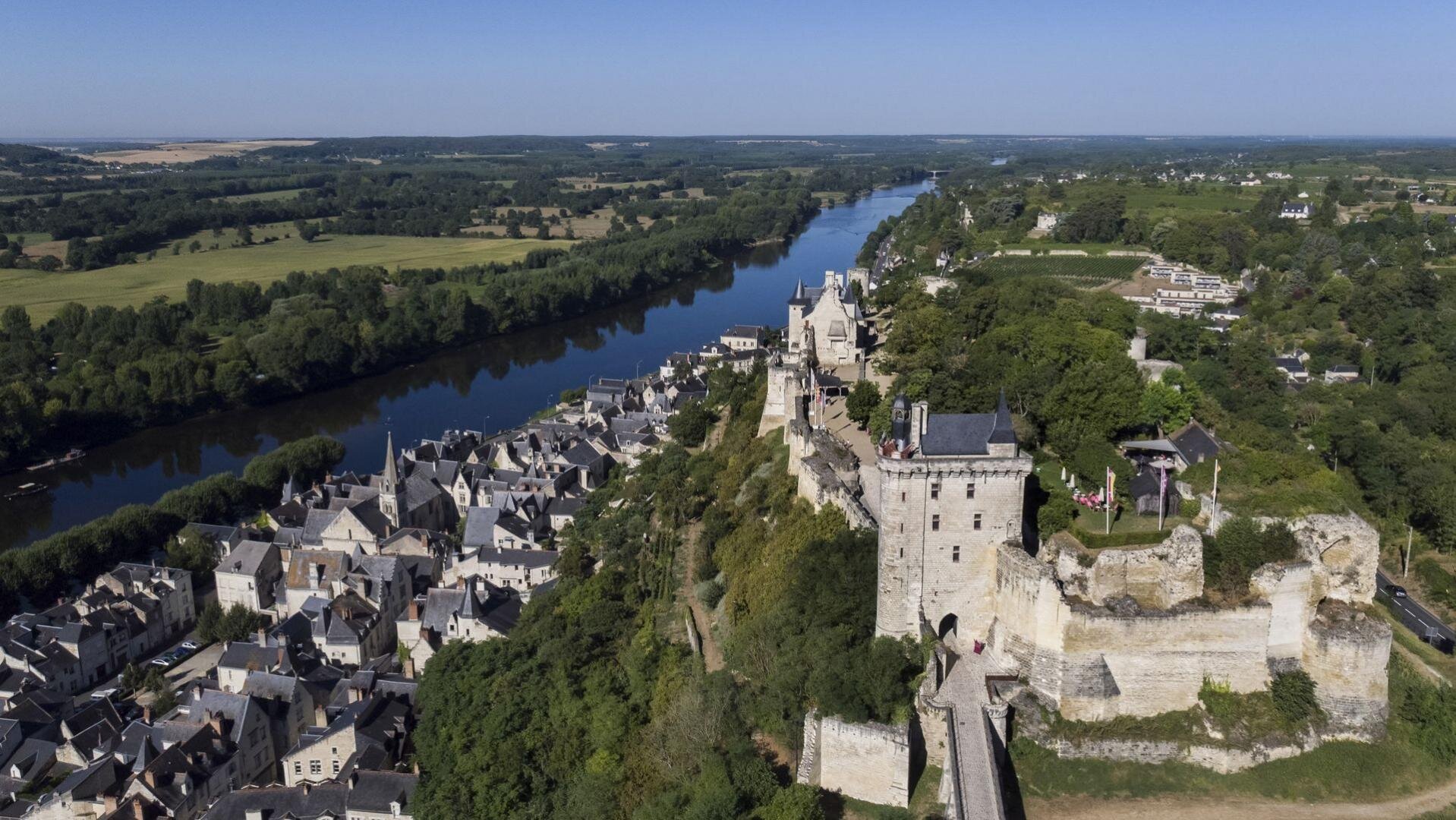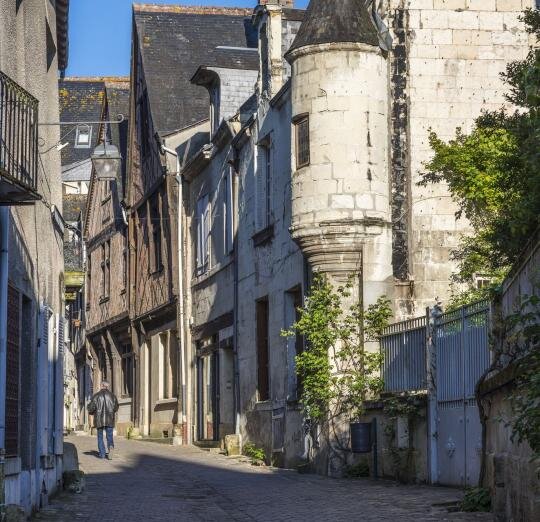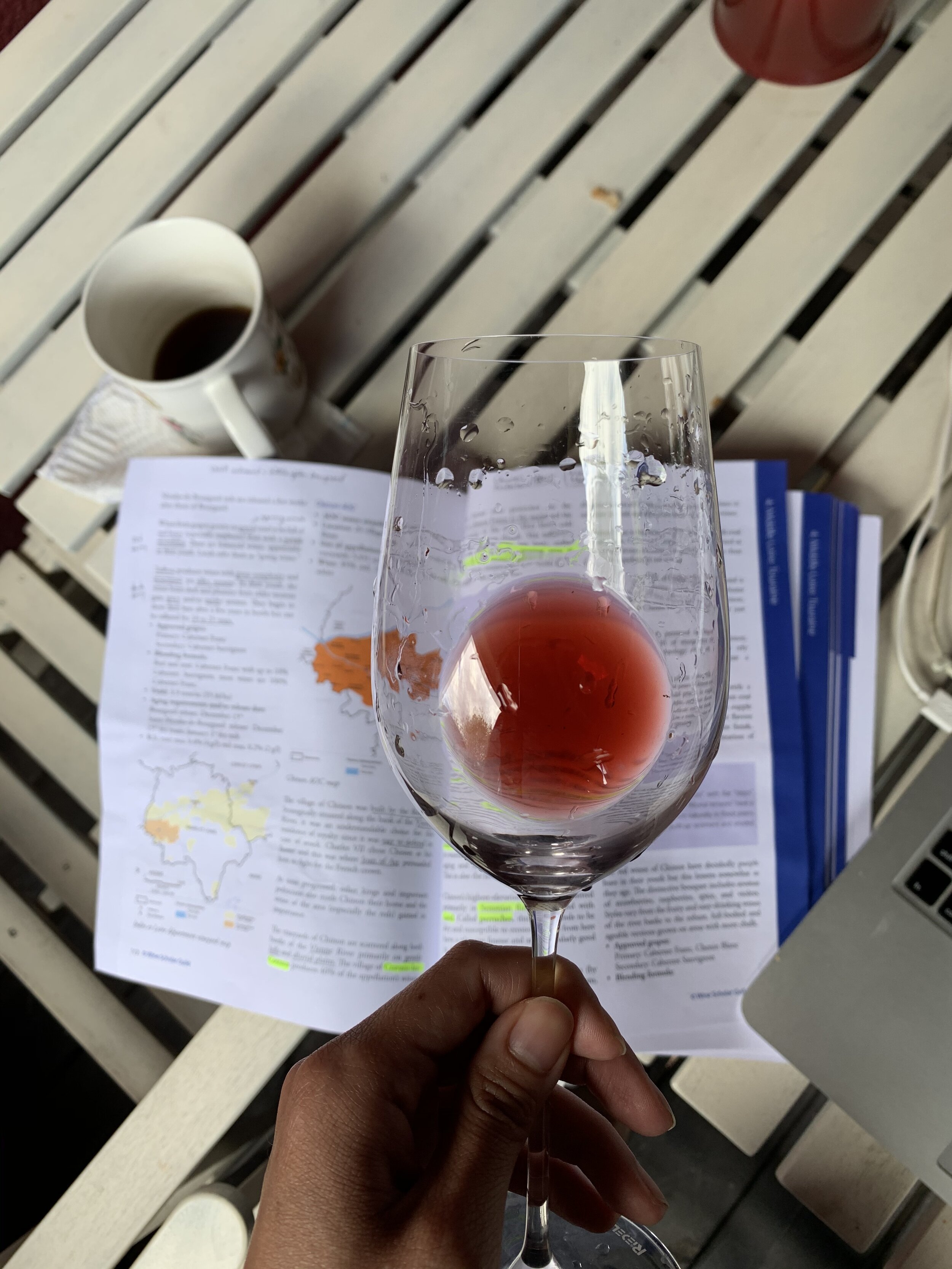Chinon – A Loire Wine Region
She Oui? Chinon. HA!
Fond of Cabernet Franc? Say yes to Chinon, the largest red wine producing region in the Loire Valley.
A village built by the Romans, Chinon is famous for its medieval streets and the ruined Château de Chinon, residence of Charles VII and the first meeting place between King Charles VII and Joan of Arc in 1429 where she persuaded him to reconquer the Kingdom of France. Throughout the centuries, many other kings and politicians had made Chinon their home.
In addition to its historic importance, Chinon is one of the better known wine producing towns of the Loire Valley, its red wines are highly prized because of its unique location, terroir, and microclimate.
Where is Chinon?
Chinon is located across from Bourgueil, separated by the Loire river. Its vineyards can be found on the gentle hills and alluvial plains along the Vienne, a Loire river tributary.
The confluence of the Loire and Vienne marks the start of mild Atlantic conditions. The oceanic climate sweeps through the two valleys, reaching the most distant hillsides and terraces. (Source: Loire Valley Wines)
Chinon’s relative position to the two forests that protect its vineyards from the elements.
Slopes are oriented east to west, enjoying excellent, sunny southern exposures. Protected from the cold and the rain by the ancient Chinon Forests to the north and the Fontevraud forest, Chinon boasts one of the warmest growing areas in the Touraine region. The microclimate here is ideal for growing Cabernet Franc.
The Soils:
Soils in Chinon can be categorized into three types:
Alluvial terraces, aka. Les Varennes, found along the river banks,
Yellow Turonian tuffeau, aka. Aubuis, on slopes and hilltops, and
Senonian flinty-clay mixed with sand, found in the highest elevation vineyards of Chinon
The Soils of Chinon
Wines from the gravely and sandy river banks are lively and fruit-forward, most suitable for everyday drinking. Slopes and hilltop vineyards yield robust and full-bodied wines that can be cellar-worthy on a particular good vintage. Whereas the higher-elevated of Senonian soils can produce elegant wines on a dry year!
The Wines:
In this predominantly red wine region, Cabernet Franc is king, yielding wines with a purplish hue in their youth with a distinctive floral, earthy, and red fruit aroma.
Les Athètes du Vin 2018 Chinon AOC
The recent 2018 Chinon I tasted from Les Athlètes du Vin came from clay, limestone and flint vineyards. It was tender and round, purple with ruby rim, a graceful wine with the aromas of fresh red currents, violets, wet rocks, damp forest trees, and a hint of sumac. Youthful, elegant, loaded with fruits, and she was surely crushable!
Next, curious about how a Chinon ages, I turned to the 2013 “Les Picasse” Chinon by Domaine Olga Raffault.
Coming from the clay-limestone hillside vineyards, it has a nose full of dried red currents backed by the same distinctive earthy character, of wet rocks, damp grass, and wild violets, that reminds me of an evening lakeside stroll in France. Chinon is reminding me of a more masculine Pinot Noir. Isn’t that fantastic? She oui.
Most of the Chinon reds are 100% Cabernet Franc. However, while uncommon, winemakers are allowed to blend in up to 10% of Cabernet Sauvignon in their red and rosé wines.
Chinon is also allowed to produce white wines, a rare existance of 3%, made of 100% Chenin Blanc and are all vinified dry. Snag one if you see one!
Quick Facts:
AOC since 1937 with 26 villages.
Chinon was the home of King Charles VII, strategically chosen for its easy-to-defend position and lovely scenery.
In 1429, just when most of the Loire was captured by the English and Orléans was being beseiged, Joan of Arc met with Dauphin, the future Charles VII at Château de Chinon and persuaded him to lend her troops to free Orléans. In the end, she successfully chased the English from the Loire and freed the city.
Chinon AOC is one of the appellations under the greater Touraine region and is Loire’s largest red-wine appellation by volume.
Cravant-les-Coteaux, a village in Chinon, is responsible for 40% of the appellation’s wines.
Besides Chinon, the Loire has other notable Cabernet Franc producing regions such as Bourgueil, Saint-Nicolas-de-Bourgueil, Saumur, Saumur Puy-Notre-Dame, Saumur-Champigny, and even Anjou, which we will discuss on another day.










